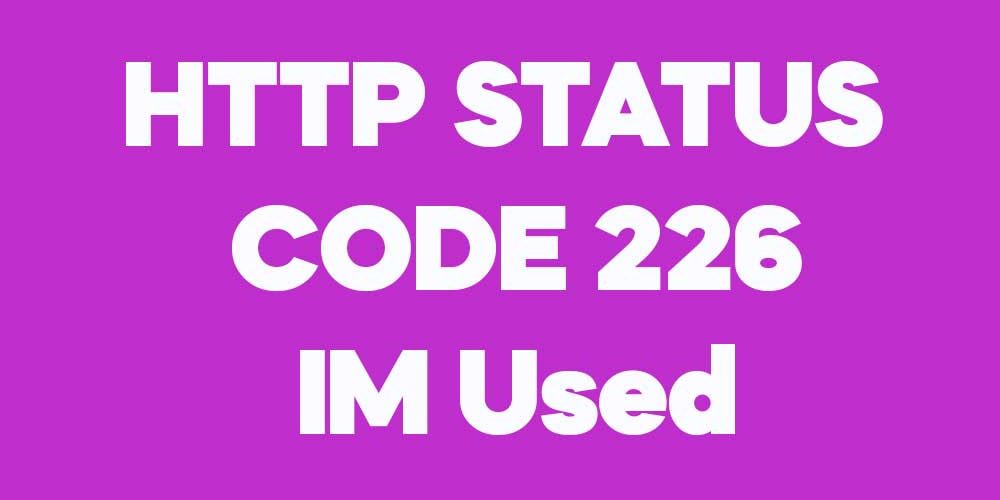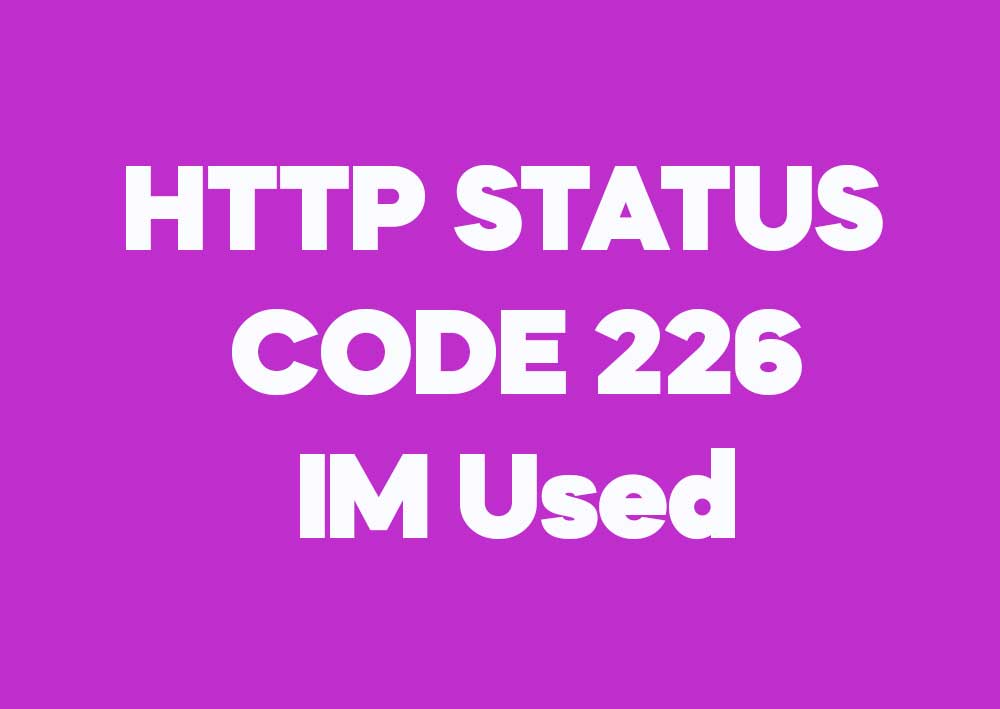What is HTTP Response Status Code 226 IM Used?
HTTP response status code 226 IM Used indicates that the server has successfully processed a request using the instance-manipulations provided by the client. It is part of the HTTP Delta Encoding standard, allowing servers to send a delta (or difference) of a resource rather than the entire resource.
When is HTTP Response Status Code 226 IM Used?
The 226 IM Used status code is used when a client requests a resource but asks for a specific instance manipulation, such as receiving only the changes made since a certain point. It is often used in caching or delta updates where transferring only the difference reduces bandwidth usage.
Significance of HTTP Response Status Code 226 IM Used in Web Development?
The 226 IM Used status code is significant for improving efficiency in data transfer. It allows servers to return only the changes or deltas of a resource rather than the full content, which is particularly useful in scenarios like content synchronization, software updates, or large file modifications.
How to Implement HTTP Response Status Code 226 IM Used?
To implement the 226 IM Used status code, the server needs to support delta encoding or similar technologies. When the client requests a specific instance-manipulation, the server responds with 226 and provides the manipulated or updated content rather than the entire resource.
FAQs
- What does HTTP 226 IM Used mean?
It means that the server has applied the requested instance-manipulation and is returning the modified version of the resource. - Is HTTP 226 a commonly used status code?
No, it is relatively rare and is primarily used in specialized applications where delta updates or instance manipulations are required. - When should I use HTTP 226 IM Used?
Use it when you need to return changes or differences in a resource rather than sending the entire content, such as in software updates or content synchronization.
Heres a couple of examples of http 226 in use
Example 1: Delta Update for a JSON Resource
# Client requests a delta update for a JSON resource.
GET /api/data.json HTTP/1.1
Host: api.example.com
A-IM: "delta"
# Server Response
HTTP/1.1 226 IM Used
Date: Wed, 09 Oct 2024 12:00:00 GMT
Server: Apache/2.4.41 (Ubuntu)
Content-Type: application/json
{
"changes": {
"field1": "new value",
"field2": "updated value"
}
}
# The server returns only the changes to the JSON resource as requested by the client, reducing the amount of data transferred.
Example 2: Partial Software Update
# Client requests an update for a software package using delta encoding. GET /software/update HTTP/1.1 Host: api.example.com A-IM: "delta" # Server Response HTTP/1.1 226 IM Used Date: Wed, 09 Oct 2024 12:05:00 GMT Server: Nginx/1.18.0 Content-Type: application/octet-stream # Binary data containing the delta update... # The server sends only the differences between the current version and the latest version of the software.
In these examples:
Example 1 demonstrates using the 226 IM Used status code for a delta update of a JSON resource, where the server returns only the changes.
Example 2 shows a software update where the client requests only the delta changes using instance manipulation (A-IM header), and the server responds with the updates using HTTP 226.
Both examples highlight how 226 IM Used can optimize data transfer by only sending the differences rather than the entire resource.


